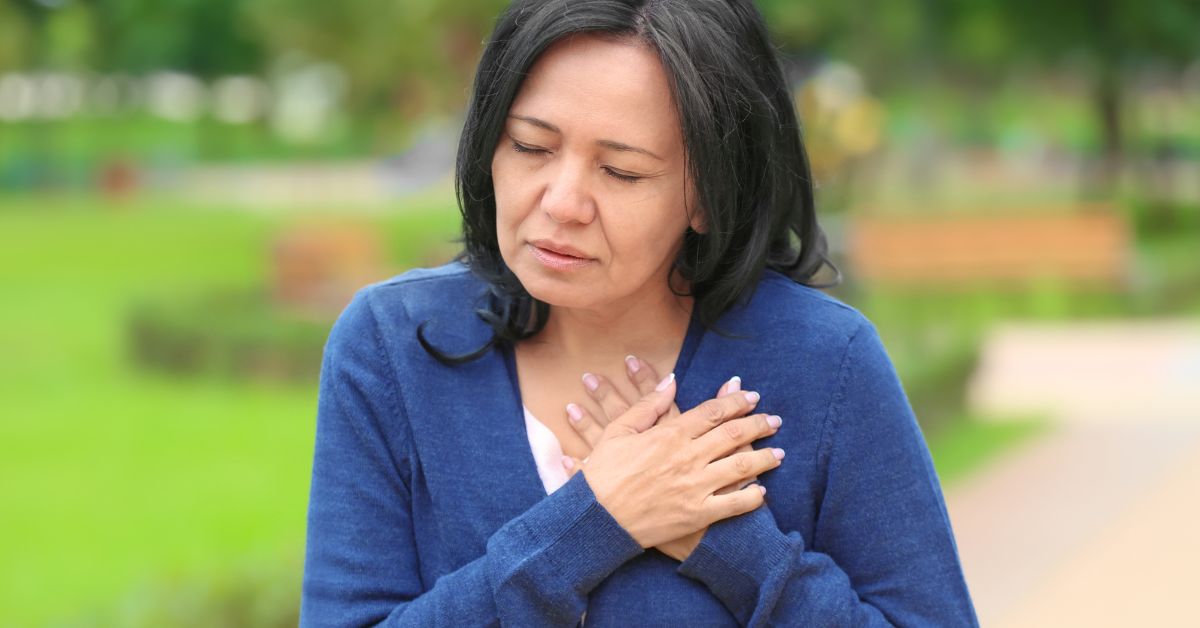Heart attacks have a deadly reputation and for good reason. Heart disease and heart attacks are the leading cause of death in the United States. The chances of surviving a heart attack depends on a large variety of factors, including:
- The type of heart attack
- How quickly someone gets treatment
- Which risk factors are present
- How quickly the use of devices like automated external defibrillators (AEDs) are used
Understanding these factors is crucial, as the chances of surviving a heart attack can vary significantly based on how quickly you receive care.
Types of heart attacks and survival rates
The type of heart attack you experience has a major impact on your chances of surviving it. The most common types of heart attacks are STEMI (ST-segment elevation myocardial infarction) and NSTEMI (non-ST-segment elevation myocardial infarction).
- STEMI: A more severe form of heart attack where there is a complete blockage in one of the coronary arteries, leading to a lot of damage. STEMI heart attacks are pretty severe medical emergencies that need immediate intervention to restore blood flow and prevent more damage.
- NSTEMI: Caused by a partial blockage of a coronary artery, which results in less damage to the heart muscle but still requires urgent medical attention.
For both types of heart attacks, the quicker you get medical attention, the better the chances of survival.
However, anyone experiencing sudden cardiac arrest (SCA), where the heart suddenly stops beating due to an electrical malfunction, is at a much higher risk of death. The survival rate of SCA is highly dependent on how fast you can get CPR or an AED, as well as how soon you can get to a hospital.
Risk factors for heart disease and heart attacks
Several risk factors can increase your likelihood of experiencing a heart attack.
Non-modifiable risk factors include:
- Age: The risk of heart disease increases with age.
- Gender: Men generally have a higher risk, but after menopause, women’s risk becomes similar to men’s.
- Family history: A family history of heart disease or heart attacks can increase your own risk.
Modifiable risk factors include:
- High blood pressure (hypertension): Having high blood pressure damages the arteries and increases the risk of coronary artery disease, which can lead to heart attacks.
- High cholesterol: High levels of low-density lipoprotein (LDL) cholesterol, sometimes referred to as “bad cholesterol,” can build up in the coronary arteries, reducing blood flow to the heart muscle.
- Smoking: Smoking increases the risk of plaque buildup in the arteries and can lead to heart disease.
- Obesity and physical inactivity: These factors are closely linked to heart disease and poor heart health.
- Poor diet: A diet high in saturated fats, trans fats and processed foods can lead to atherosclerosis (narrowing of the arteries), increasing the risk of heart attack.
- Diabetes: Having diabetes or prediabetes increases the risk of heart disease by contributing to the buildup of plaque in the arteries.
Symptoms of a heart attack
Recognizing heart attack symptoms can make a significant difference in the outcome. Common symptoms include:
- Chest pain: This is the most well-known symptom and may feel like pressure, tightness or squeezing in the chest. It can last for a few minutes or come and go.
- Shortness of breath: Difficulty breathing or feeling winded can accompany chest pain or happen on its own.
- Pain in other areas of the body: The pain may radiate to the arms, back, neck, jaw or stomach.
- Nausea or vomiting: Some individuals may experience nausea or an upset stomach during a heart attack.
- Cold sweat: A person having a heart attack may break into a cold sweat.
- Dizziness or lightheadedness: Feeling faint or dizzy is another symptom that can occur, often alongside chest discomfort.
While you likely won’t experience all possible symptoms of a heart attack, women and men often exhibit different signs. However, if you experience any of these symptoms regardless of gender, seeking emergency medical help is critical.
The role of blood flow to the heart
Blood flow to the heart is essential for it to function correctly. The heart receives oxygen-rich blood through the coronary arteries. When a blockage occurs, the heart muscle doesn’t get enough oxygen, which leads to a heart attack.
The longer the heart muscle is without enough oxygen, the more damage. Restoring blood flow is key to minimizing damage and improving your chances of surviving a heart attack.
Angioplasty and the use of stents to open blocked arteries, as well as medications like thrombolytics (clot-busters), are common treatments that can help restore blood flow quickly after a heart attack.
Immediate treatment and survival chances
Your chances of surviving a heart attack are much higher when you receive treatment as quickly as possible. The sooner blood flow is restored to the heart muscle, the less damage it causes.
Using an automated external defibrillator (AED) can be life-saving for sudden cardiac arrests (SCA). The AED delivers an electric shock to the heart, which helps restore a normal rhythm and allows the heart to start beating again. Immediate access to CPR and an AED increases the chances of survival from SCA significantly.
In a hospital setting, doctors will often use medications or procedures like angioplasty, stent placement or coronary artery bypass surgery to help restore blood flow and improve survival odds.
Prevention and long-term survival
If you survive a heart attack, the focus shifts to prevention and long-term heart health. Managing high blood pressure, maintaining a healthy weight and eating a heart-healthy diet are crucial steps to prevent further heart problems.
Regular physical activity, reducing alcohol consumption and quitting smoking are also important in reducing the risk of another heart attack.
If you’ve already experienced a heart attack, you may need ongoing medical treatment, including medications, to reduce the risk of further cardiovascular events. Statins, beta-blockers and aspirin may be prescribed if you have underlying coronary artery disease to reduce the risk of future heart attacks.
How we can help
If you’re having a heart attack, time is muscle. The sooner medical intervention is provided, the more likely you are to minimize damage to the heart and improve your chances of surviving.
If you suspect you’re having a heart attack or show any symptoms of one, call 911 right away or get to the nearest emergency department. Calling emergency services can help you get medical attention faster, as EMTs can begin treatment in an ambulance on the way to the hospital.
Learn about the heart and vascular services we offer at Mercy Health.






